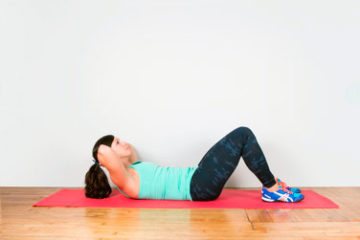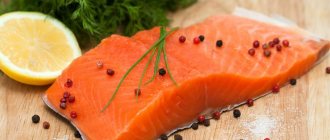After giving birth, all of us, in the hustle and bustle of children's and household chores, think about our appearance and want to quickly get back into our original shape, and some women want to at the same time correct what they were not happy with before. Well, that's right. A woman should look good and be well-groomed. Even in such a difficult time as the postpartum period. When you need to get used to a new, unfamiliar regime and way of life. To the fact that you no longer belong to yourself. And everything depends not on you, but on the new, small, but very powerful member of the family.
The need for exercise for a nursing mother
There are many opinions and debates about whether a nursing mother can play sports or not. The theory about the harmfulness of sports after childbirth is unfounded and erroneous. All available media and printed sources describe and prove the benefits of sports not only after childbirth, but in life in general. An active lifestyle has always kept a person in good shape, giving inner lightness and self-confidence. And for a woman this is especially important. This is especially true when breastfeeding. Let's figure out how to make sports optimal and compatible with caring for the baby, who needs your presence and care.
Breastfeeding is a very useful and mandatory activity, both for the baby and for the mother herself. And the longer you breastfeed, the healthier your baby will be and the more beautifully shaped your breasts will remain. But you need to be distracted by active actions. Many women complain of pain in the neck, spine, lower back, and shoulder blades from unusual carrying of the baby in their arms, rocking and playing. The stroller is also by no means a light bag, and family members cannot always help lift it up or down. All these loads, especially for those who were not ready and not accustomed to such muscle tension, can be very physically difficult if they are not used to it. And even more so morally. Not everything always goes smoothly when a child is growing up. And various incomprehensible questions and problems cause worries and worries. And there is also such a thing as “depression after childbirth.” In general, nerves can be at their limit and a young mother should not allow herself, and subsequently her baby, to get into such a state, who will feel everything that happens to her better than any bearing or radar. Sports activities perfectly solve almost all these problems and troubles.
Many women complain of pain in the neck, spine, lower back, and shoulder blades from unusual carrying of the baby in their arms, rocking and playing. The stroller is also by no means a light bag, and family members cannot always help lift it up or down. All these loads, especially for those who were not ready and not accustomed to such muscle tension, can be very physically difficult if they are not used to it.
What sports are allowed while breastfeeding?
- Swimming – both pregnant and breastfeeding women can swim. Moreover, it has a number of advantages: it engages all muscle groups, tones them, reduces the load on the spine and joints, and even promotes the breakdown of fat cells, thereby reducing the appearance of cellulite.
- Walking is perhaps the most familiar and accessible sport for a young mother. It is tiring and annoying, but still improves the functioning of the cardiovascular system, speeds up metabolism and promotes the burning of fat deposits.
- Yoga, gymnastics, Pilates are some of the best sports for a nursing mother. They differ from others in the smoothness and regularity of physical exercises. And ideally, they improve muscle tone and simply lift your spirits!
- Aerobics, shaping - they charge you with positive energy and improve your mood. True, in case of moderation of training.
- Fitness is one of the most common sports that has the right to life during breastfeeding. The main thing is to approach the training correctly and make sure that it does not exceed 40–60 minutes a day and ends at least an hour before the upcoming feeding.
What do you struggle with when playing sports after childbirth?
- With the monotony of housework and baby care. They literally force you to interrupt, to be distracted by something else. A new activity forces you to reconsider your daily routine, and, freeing up time for sports, streamline your other affairs. This, if you like, is the reason to set up your home time management.
- With a changed figure after childbirth. The tightening of all muscles, their elasticity, the changed gait and the appearance of plasticity in movements will definitely be appreciated by those around you and, first of all, by your beloved man.
- Accumulated problems, possible grievances, worries - all of this has a very rational and useful way out, called “sport” in all its manifestations. It’s better to give vent to accumulated emotions on hardware than on loved ones, isn’t it?
- Physical activity has a beneficial effect on the cardiovascular, respiratory, musculoskeletal, and digestive systems. Studies have proven the positive effects of active exercise on breastfeeding women, who demonstrated excellent health and excellent emotional well-being.
Basic information
BCAA is a drug that consists of three amino acids: leucine, valine, isoleucine. These are essential substances that are responsible for building muscle mass.
Valine is an amino acid that repairs damaged muscle fibers. During intense training, muscle fibers are torn; when they grow together, muscle mass increases. Valine accelerates the regeneration process and muscle growth.

Leucine reduces blood glucose concentrations and enhances the production of somatropin (growth hormone). This substance restores muscle and bone tissue.
Isoleucine normalizes blood glucose levels, increases endurance, and accelerates the regeneration of muscle fibers.
During active training, an athlete spends a lot of energy, and therefore he needs an additional source of energy. Otherwise, the body will use up its own reserves (glycogen, amino acids). BCAAs restore energy balance, increase muscle mass, and burn fat.
If the main goal is to accelerate muscle growth, then the product is consumed before and after exercise. If the workout lasts more than 60 minutes, then you can take amino acids during the process.

If the main goal is to lose weight, then the supplement is taken before and after training. To reduce appetite and speed up weight loss, the amino acid is also consumed between meals.
BCAAs are available in the form of powder, capsules and tablets. More than 50% of athletes prefer the last two forms of the drug, as they are convenient and have a neutral taste. However, tablets are absorbed more slowly than capsules. The powder form is economical and quickly digestible, but has an unpleasant taste.
The standard dosage of the product for one workout is 33 mg/1 kg. If a woman weighs 65 kg, then 2.15 g of BCAAs are taken per session, and if the woman weighs 80 kg, 2.64 g. To ensure that the product exhibits only the best properties, strictly adhere to the dosage.
When can a nursing mother exercise?
In the West, in Europe and the USA, psychologists are inclined to believe that the first three months after pregnancy are equated to its continuation, called the “fourth trimester.” They are not far from the truth in their assumptions. The baby acutely feels the presence of his mother, to which he has become accustomed for nine whole months and is not ready to give it up so quickly. Therefore, you can devote approximately two and a half to three hours to exercise in the first three months after birth, including travel. In this case, be sure to feed the baby before leaving and leave about one hundred and twenty grams of expressed milk for those who will stay with him.
Personal experience
vikasya
Exercising during breastfeeding
Snezhana
Tell me, is it possible to play sports while breastfeeding?
Marina
Sports during breastfeeding...??
When the baby is four months old, you can extend your absence by two to three hours. And after nine months, leaving the baby without a mother is simply necessary. He must gradually get used to independence and feel his maturation.
All these recommendations can be followed if:
- you have no contraindications from your attending physician for exercising after childbirth;
- you have someone to leave the baby with (and if not, wait until he grows up and start attending classes with a sling);
- if you do not suffer from infectious or viral diseases.
What sports should you avoid while breastfeeding?

- Strength loads - barbell, dumbbells, and push-ups. They contribute to increased production of lactic acid, and are debilitating, and often lead to injuries to the mammary glands;
- Athletics. Why can't you run and jump during lactation? Because this exposes the breasts to unnecessary vibrations and can cause a decrease in milk supply.
Fears about lactic acid
Sometimes not entirely knowledgeable doctors scare women with the fact that during breastfeeding, exercise affects the quality of milk, increasing the level of lactic acid in the body. Indeed, it is so. Lactic acid, of course, is released; this is a normal physiological process during sports. But it does not affect the quality of milk in any way. But that “bitterness” that some nursing mothers note, and the baby’s refusal of milk after classes can happen if your attendance at the gym is more than three times a week, and they are held in “increased intensity” mode.
A nursing mother can play sports, starting with light loads under the careful supervision of an instructor. Feed your baby before leaving, eat properly and balanced, maintain personal hygiene and everything will be fine. Please note that during exercise there should be no stress on the chest muscles while you are feeding the baby. You will do this when you stop breastfeeding completely. If, of course, you decide that in your case it is necessary.
You can do active physical exercises without leaving home. This can be done not only in the gym or training class. Walking, with a stroller, or even better with a kangaroo or sling will be an excellent alternative, especially in the fresh air. You can also find a set of exercises for yourself that you can do at home, both by yourself and with your baby. Be healthy and beautiful!
A simple set of exercises that promote rapid recovery
Exercising will help you recover faster and restore muscle tone.
Performing the following exercises will not have a negative effect on lactation:

- Lie on the floor, bend your knees. Raise your upper body, pressing your lower back to the floor. Place your hands behind your head. Descend gradually.
- Lie on the mat with your legs straight. Raise them 45 degrees, stay in this position for a while, and then return to the starting position.

Place your hands on the bed, face down. Feet are on the floor. Perform push-ups, making sure to keep your spine straight. Relax your chest muscles. The muscle tissue of the arms is strengthened.- Get on all fours on the floor. Alternately move your legs up and back. Movements are smooth. Hold the raised leg in the air for several minutes.
- Lie on your side. The support is the elbow. Bring your legs together and rise up. Make circular movements. Perform similar actions on the other side.
- Lying on your back, extend your arms along your body, bend your legs. Raise your pelvis as high as possible. Stay like this for a while. Don't raise your shoulders.











